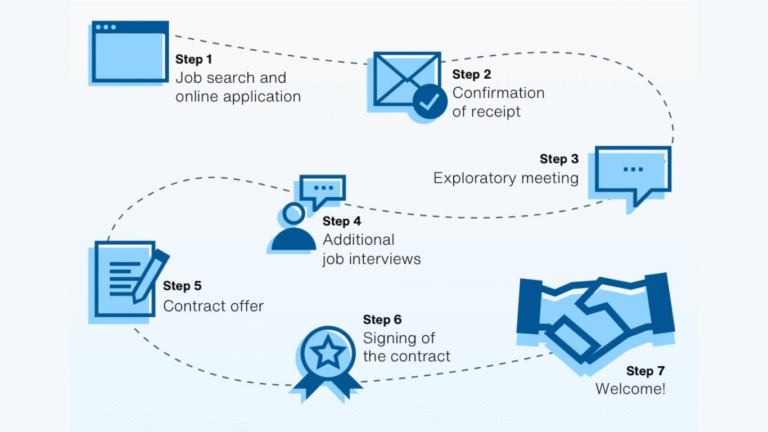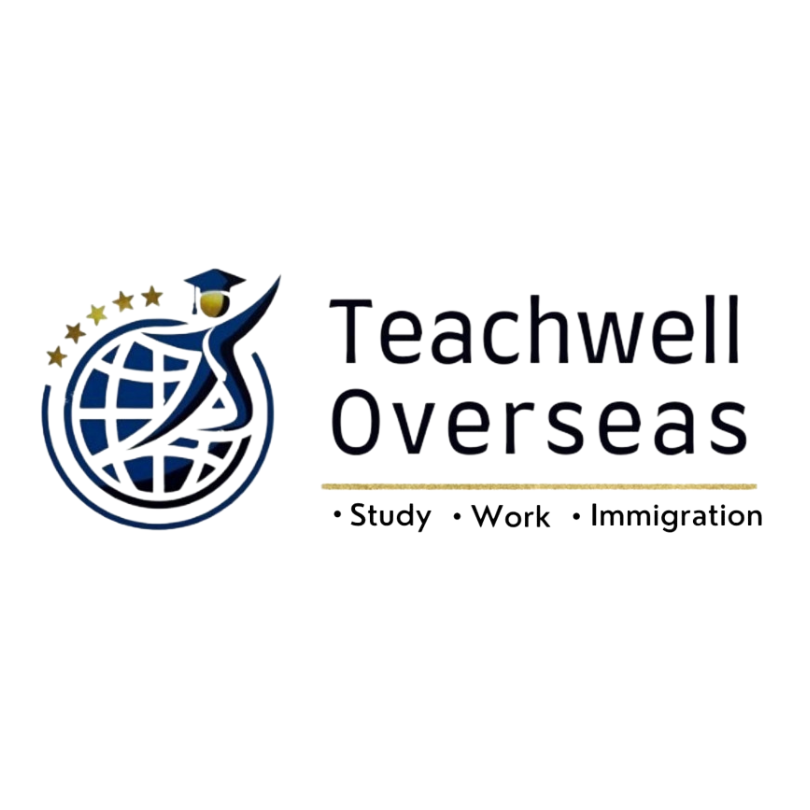Check official 2026 Overseas Education updates and deadlines! Visit Now
Study Abroad Consultants In Delhi
Study Abroad Program for Overseas Education 2026 Intake
International study planning for the 2026 intake is a thrilling, yet often complicated, process. For many Indian high school students, achieving an education abroad presents not only academic prestige but also exposure, networking, and employment options. However, planning will be an important part of making this dream come to fruition by assessing the current climate, and having a thoughtful strategy. In this guide, we will walk you through each key step along the way from selecting a country and program, to applying, funding and the adjustment to living and learning in a new space, to ultimately thriving.
![]()
Why Choose Overseas Education for 2026 Intake?
Studying abroad is no longer just an indicator of status; it has developed into a viable strategy for students who seek to be competitive in the global market. International universities typically offer state-of-the-art labs, research opportunities, interdisciplinary programs, and industry connections that competing domestic institutions cannot offer. In addition to these fortifying social indicators, as economies become increasingly globalized, employers are also looking for graduates with international exposure or cross-cultural experiences, as well as access to an international network.
There are at least three trends supporting the attractiveness of studying abroad for the 2026 intake. First, an increasing number of institutions are offering hybrid, or flipped models that allow students to begin studying online before joining the campus in person. This gives students the option to cover the cost of travel and the time with their visa, which reduces the burden of doing the two at the same time. Second, sustainable and interdisciplinary programs—particularly business + environment, AI + social impact, and biotech + data—are gaining traction. Third, post-study work policies in many countries have become more favorable, offering graduates (and their families) the opportunity to work in-country for at least 1-3 years. And lastly, scholarships and financing options have increased and become more accessible for studying abroad.
Thus, for students planning to join the 2026 intake, the timing is right—if you plan smartly, act early, and align your goals.
Key Steps to Prepare for 2026 Intake
1. Define Your Goals & Program Type
Before exploring universities or even which program to take abroad, determine what your motivations are for studying abroad and what type of program is appropriate for you. Are you interested in a master’s, a full 4-year undergraduate program, a short diploma or exchange? Does the program offer a more research-focused program or is it more professionally-oriented? Do you want to stay abroad after you graduate or return to India?
These questions shape your choices. For instance, if your goal is to gain work experience abroad, pick countries and universities with strong co-op or internship support, and favorable post-study work policies.
2. Choose the Right Country & University
The nation you choose will impact cost, curriculum, quality and future employment opportunities. Traditional destinations – USA, UK, Canada, Australia – are still popular with ambitious students, but emerging choices like Germany, Netherlands, Singapore, Ireland, and even non-traditional Big Four options are gaining popularity.
When evaluating universities, consider the following:
– Strength in your area of study/discipline
– Research capacity & faculty
– Industry relationships & internship
– Scholarship & financial aid
– Post study visa and work permit
– Campus atmosphere and student support services
Create selection list: safe range, competitive range, stretch range.
3. Understand & Prepare for Entrance or Admission Tests
Depending on your country of application and the university itself you may be required to take tests like the GRE, GMAT, IELTS, TOEFL, or subject-specific testing. Start by compiling all the test-based requirements for your target institutions. Next, make decisions on the target score(s) you wish to obtain, and a timeline for your test preparation. Often, you may want to take the test sooner than later so that you will have the option to retake the exam again.
At the same time, start to work on your academic profile, which means maintain a high GPA, involvement with projects or research projects that are relevant to your field of study, and develop an extracurricular portfolio that supports your interest in your area of study.
4. Application Timeline & Documents
To prepare for the 2026 intake, starting the admissions process early is beneficial – ideally starting between 10-12 months in advance. The following time frame generally works:
12 months prior – create a shortlist of countries, look into their programs and begin preparing to take tests.
9-10 months prior – take tests, draft your SOPs, solicit LORs and organize paperwork.
6-8 months prior – apply for universities and submit applications.
3-4 months prior – accept offers to attend and apply for a visa and your financial arrangements.
1-2 months prior – secure accommodation, book flights and prepare for your departure.
Examples of important documentation include transcript, test score report, SOP/essays, letters of recommendation, proof of finances, passport, standardized test certification, CV/resume, and any portfolio (if applicable).

Deep Dive: Financing Your Overseas Education
One of the biggest barriers to overseas education is cost. But today, more than ever, creative funding models and scholarship options make it possible.
Scholarships, Grants & Fellowships
Numerous universities provide scholarships and assistantships based on merit. A number of countries offer scholarships by the government to entice international talent. Make sure you have a list of scholarships you are eligible for (university-level, national-level, subject-level), and make a note of the deadlines for applications.
Education Loans & Alternative Financing
In India, an increasing number of students are obtaining education loans to finance overseas education. The data indicates that almost one in three Indian students now rely on education loans to support their education overseas. Please evaluate banks and NBFCs that offer attractive rates of interest, manageable repayment terms, and sufficiently cover the cost of overseas education. Some of them also provide the option of Income Share Agreements (ISA) or deferred payment plans.
Explore top guides to plan your 2026 Overseas Education journey! Read More
Work While Studying & On-Campus Jobs
Numerous nations allow for some amount of employment during studies (e.g., 20 hours / week); you could work on campus, get a research assistantship, or be a teaching assistant to supplement your living expenses. Just make sure you do not take a job that interferes with your studies and academic performance.
Budgeting Smartly
Make a monthly budget for housing, food, transportation, utilities, and miscellaneous expenses. Use economy: share apartments, cook instead of eating out, and take advantage of student discounts as well as local plans. Highly recommend you start this budget now so you have an idea of how much you will need to save for every expense total.

Academics & Student Life After Arrival
Getting your visa and landing abroad is just the start. The first year abroad is crucial for adaptation, performance, and building momentum.
Orientation & Settling In
Go to your orientation! There will be presentations regarding many topics like academic expectations, support centers for various, safety and security, and culture. Take this opportunity to connect with peer mentors/ advisors. You will also have the chance to know about resources on campus, such as library, research labs, counseling center, academic resources center, student clubs, etc.
Time Management & Study Strategy
Studying abroad will likely involve ongoing assessments, projects, midterms, group assignments, and a role in class participation. In order to thrive, you will need strong time-management skills. Use a planner or technology to jot down your assignments, deadlines, mid-term exams, and other documentation. Consider breaking down large assignments into weekly or daily tasks. It is important to be proactive. Occasionally, look ahead in the curriculum to pre-read the lessons, and take a little time each week to read and reflect on your class notes.
Making Connections & Networking
Develop connections with professors, classmates, and the local industry. Participate in seminars, hackathons, and organizations. The connections you form will be one of your biggest assets—doors often open through people. Use LinkedIn, university events, and alumni networks.
Internships, Co-ops & Research
To get the most out of an international education, search for internships or research positions early on (or take graduate courses that include them). Many programs have built-in co-op and/or internship semesters. Internships provide depth to your résumé and frequently lead to job offers upon graduation!
Cultural Adaptation & Well-being
Cultural shock, homesickness, and adjustment stress are real. It’s important to be patient with yourself. Join cultural or international student groups, stay in touch with relatives, learn local customs, and explore a little. Sleep, mental health, and your well-being are paramount; many universities offer counseling services, and you should take advantage of them if needed.
Trends & Shifts in Overseas Education for 2026
To make informed decisions, it’s helpful to understand current trends shaping overseas education in 2026.
Hybrid & Blended Learning
Universities are increasingly offering blended models where initial semesters may be online, shifting to campus later. This flexibility is especially helpful in visa delays or to reduce initial expense.
Alternative Destinations Gaining Popularity
While the “Big Four” countries (USA, UK, Canada, Australia) continue to be the most popular, many Indian students are looking at other options such as Germany, France, Singapore, Ireland, and the Netherlands. These countries tend to have lower tuition fees, strong links with industry, and other options for post-study work.
Emphasis on STEM, AI & Sustainability
There is explosive demand for programs in AI, data science, cybersecurity, climate tech, and sustainable development within overseas education trends. Institutions are increasing their interdisciplinary offerings in order to address changing job markets.
Financing Innovation
New financial models—like income share agreements, deferred tuition, and peer-to-peer lending—are emerging to ease the cost burden of overseas education.

Challenges Indian Students Face & How to Overcome Them
Visa & Immigration Uncertainty
Visa denials or delays are a fear that many people share. To alleviate concerns about delays or denials, submit your visa application early, reconsider all documents, maintain good test scores and financial proof, and think ahead to alternate places as backups. Stay current on immigration regulations.
Currency Fluctuation & Cost Overruns
Currency fluctuations can change your budget mid-course. To hedge this risk, maintain some contingency funds, lock in forex in advance (if possible), and monitor spending closely.
Homesickness & Social Adjustment
In the first few months, homesickness plagues most Indian students. While staying in touch with family is important, it is equally important to build friendships in your local area. Make sure to join student societies, social events, and cultural clubs to create a sense of belonging.
Academic Pressure & Teaching Styles
Educational styles in other parts of the world tend to prioritize participation, critical thinking and ongoing assessment; shifting away from rote learning can be uncomfortable for Indian students. (1) You can adapt back to school by trying to engage in class discussions, seeking help early, and participating in group studies.
Checklist for 2026 Intake: Action Plan
Here is a chronological checklist for you to follow in your preparation (which has been recast in narrative form):
Start early—like 10–12 months before the deadline—and shortlist countries/universities and do research on the program requirements. If you set aside some time, you can also prep for required tests (GRE, IELTS, etc.) during this time. A few months in, you can draft your Statement of Purpose and ask for Letters of Recommendation (LOR). Then, as the deadlines approach, you will be submitting your application, keeping track of confirmations, and, once offers come in, deciding on what offer to accept. When you arrive on campus, you will go through orientation, get familiar with the academic systems, go to go a few networking and career events, and finally engage in internship/research opportunities. Keeping a timeline and setting reminders along the way will also help you ensure that none of these steps are skipped.
Why 2026 Intake Offers Unique Opportunity
The 2026 intake is a pivotal moment for global higher education, as institutions rethink their international admissions processes to be more flexible and inclusive, and many are adopting more hybrid or blended formats with flexibility to enhance transition. Some countries are also reflecting on visa policies to keep talent, as well as creating more accessible funding arrangements. In summary, overseas education in the 2026 intake will be, if you plan well, the most flexible, accessible and responsive it has ever been.
Plan your 2026 Overseas Education journey today!
Conclusion
A study abroad opportunity for 2026 is more than a degree: It is an investment in your future hustle, network, and mindset. Studying abroad can differentiate you in a competitive market, provide meaningful global exposure, and connect you to careers that can operate between geographic boundaries. But study abroad is only more successful when we start early, choose wisely, manage finances strategically, adjust well, and take advantage of every learning opportunity, academic, social, and professional.
If the time is now for you to search for universities, develop your financing plans, or customize your SOP, I would welcome the opportunity to help you develop a personal roadmap. Please send me your preferred country option, subject and budget, and I will guide you through the process step by step.
